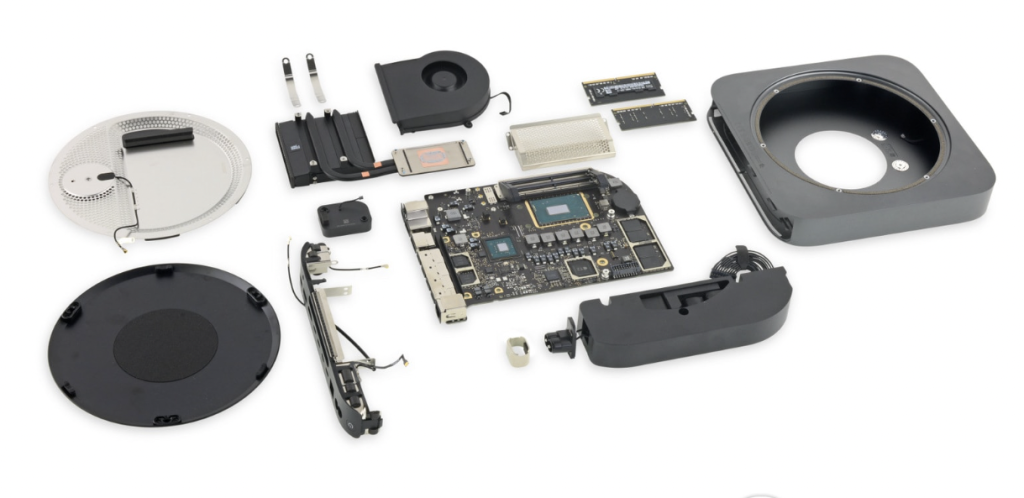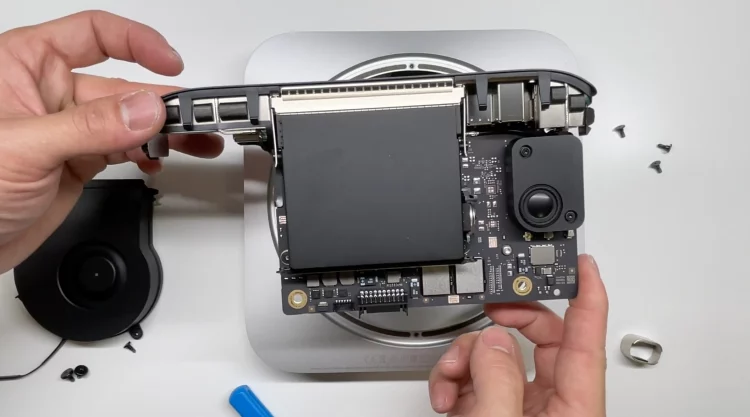A New Era for the Mac Mini
The latest iteration of the Mac Mini, part of Apple’s M4 series, has taken the tech world by storm, reclaiming the spotlight once held by its predecessor, affectionately dubbed the “little transparent” model. With its exceptional price-performance ratio, this new design marks a significant departure from a 14-year-old aesthetic, being small enough to fit in one hand, and sparking lively discussions among enthusiasts and critics alike.
A Remarkable Transformation
When placed alongside its predecessor, the new Mac Mini is noticeably smaller, resembling a miniaturized version just slightly larger than the Apple TV. Apple’s ability to slim down the Mac Mini raises a curious question: how did they accomplish such a feat?
The transition to Apple Silicon has drastically reduced the size of the mainboard inside the Mac Mini, which now occupies less than half of the chassis, creating ample space that some online commentators quipped can be used to “keep fish.”
While the reduction in size may not be an engineering marvel, it effectively eliminates excess internal space. The result is a tightly packed internal layout where every inch of the casing is filled with components, reflecting meticulous design and engineering efficiency.
Innovative Cooling Solutions
The compactness of the new Mac Mini also impacts its thermal management. Unlike its predecessor, which benefitted from generous passive cooling space, the new model introduces a revamped cooling solution where the fan is located near the front and the exhaust at the back. This design draws air in from the bottom, circulates it internally, and expels heat efficiently, ensuring optimal performance.
Furthermore, the strategic slant of the exhaust port allows for quicker release of hot air, with the vent positioned to direct airflow away from the user. Underneath the exhaust lies the mainboard and power supply, arranged in a dual-layer format.
Upon removing the mainboard, one might be surprised to discover that its core components take up less than half the internal space, indicating that the Mac Mini could be even smaller if the power supply were external.
A Modular Storage Design
Prominently featured above the mainboard is the new SSD module, a point of much debate and excitement. Unlike most current Mac products, this storage component is not soldered to the board but rather designed to be easily removable with a simple screwdriver—a significant shift towards modularity.
This design is reminiscent of the Mac Studio’s storage solution, though Apple has created a specific slot that does not accommodate standard PC modules. Tech enthusiasts have found that with some technical savvy, one can replace individual NAND chips on the storage board itself, offering a route to upgrade without needing to replace the entire board—a task considerably more feasible than those involving the soldered storage chips found in previous MacBook Pro models.
Experiments conducted by iFixit further reveal the potential of this modularity: by transferring the 512GB SSD module from one machine to another, users were able to successfully configure the device to boot, showcasing the straightforward nature of storage upgrades.
Thoughtful Enhancements Across the Board
With the shift to the M2 series, entry-level models were criticized for featuring a solitary NAND chip, leading to significant performance disparities in read/write speeds. The new Mac Mini addresses this by equipping the 256GB version with dual chips, effectively matching the performance levels of higher-capacity models.
The M4 Pro version features an elongated storage module designed to support Thunderbolt 5 interfaces with impressive read speeds of up to 120GB per second.
In terms of audio improvements, the new model includes an upgraded speaker enclosure, enhancing sound quality but still falling short of other Mac products in terms of audio fidelity.

Engineering Elegance and Repairability
Turning to the power supply, Apple has devised an efficient connection system whereby screws on the board link directly to the power lines, eliminating the need for extra connectors. Remarkably, the power capacitors are designed to run the entire width of the circuit board rather than standing vertically, a more expensive but aesthetically pleasing choice that helps control the thickness of the power board.
Another notable feature of the new Mac Mini is its ease of disassembly. While the back cover requires careful handling due to a snap-fit design, the overall internals have been crafted for maximum accessibility. Most components are secured with screws or clips, minimizing reliance on adhesives or soldering techniques, thus simplifying repairs and upgrades.
This stands in stark contrast to the new iPad Pro, which employs extensive use of adhesives for its slim profile. The new Mac Mini exhibits a high level of reparability, with iFixit awarding it a score of 7 out of 10—one point higher than its predecessor—highlighting a commitment to repair-friendly design.
Lasting Impressions and Future Prospects
Upon evaluating the new Mac Mini, one can clearly see two prominent themes of longevity. The robust performance of the M4 processor, combined with enhanced repairability and upgrade potential, suggests that this machine is built to last.
Moreover, its compact design couples convenience with a sophisticated internal architecture that is likely to set the standard for future Mac Minis. While the current size is already impressive, enthusiasts might still dream of a version small enough to fit in their pockets—a prospect that could take years to realize.


















































Discussion about this post